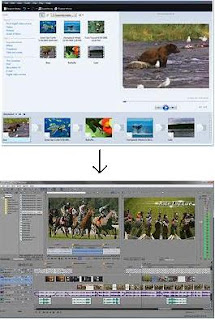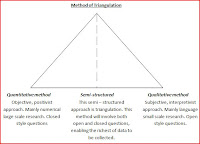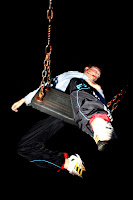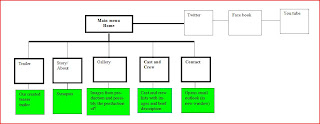 New media technology is major part of the film industry today. Throughout my research, planning, construction and evaluation I have used this technology a lot and in many different forms. Firstly, before starting my coursework I created an account using blogger.com. Having used this technology in my previous media coursework I felt confident in using it in order to best express my work towards the project through publishing my posts. Using this method provided many advantages. For example, my peers and teachers have access to my posts electronically where they can then comment providing me with audience feedback. What I also like about this method is that you are able to express individuality and personally by customisation of your page.
New media technology is major part of the film industry today. Throughout my research, planning, construction and evaluation I have used this technology a lot and in many different forms. Firstly, before starting my coursework I created an account using blogger.com. Having used this technology in my previous media coursework I felt confident in using it in order to best express my work towards the project through publishing my posts. Using this method provided many advantages. For example, my peers and teachers have access to my posts electronically where they can then comment providing me with audience feedback. What I also like about this method is that you are able to express individuality and personally by customisation of your page. During the research stages of my production the internet played a substantial role. Firstly, the internet gave me access to existing teaser trailers, the website that allowed me to do this is You tube; a website which enables people to publish and share their videos globally. One major advantage of using this site was the ability to pause and play, this enabled me to analyse the trailers in sections and at in my own time and therefore go into greater detail. After watching three existing trailers a number of times I then analysed each individually. One limitation of this as a research method is that it is a very time consuming process. However, it allowed me to gather rich qualitative data which provided me with a greater understanding of the typical codes and conventions of a teaser trailer of my genre as well as identifying key skills and techniques used in order to make the teaser trailer effective. This knowledge can then later be applied to our productions in order to be produced in the most professional of standards. I also used the internet during the research stages of my poster and teaser trailer. Again this was to access and analysis of existing products.
During the research stages of my production the internet played a substantial role. Firstly, the internet gave me access to existing teaser trailers, the website that allowed me to do this is You tube; a website which enables people to publish and share their videos globally. One major advantage of using this site was the ability to pause and play, this enabled me to analyse the trailers in sections and at in my own time and therefore go into greater detail. After watching three existing trailers a number of times I then analysed each individually. One limitation of this as a research method is that it is a very time consuming process. However, it allowed me to gather rich qualitative data which provided me with a greater understanding of the typical codes and conventions of a teaser trailer of my genre as well as identifying key skills and techniques used in order to make the teaser trailer effective. This knowledge can then later be applied to our productions in order to be produced in the most professional of standards. I also used the internet during the research stages of my poster and teaser trailer. Again this was to access and analysis of existing products. During my research I also used the Microsoft Office programs Word and Excel in order to collect and analyse primary research. Within Word I would create a number of questionnaires in order to collect primary research. http://lewis-tillyer.blogspot.com/2010/10/our-questionnaire.html The program was perfectly suited for this purpose, using features such as numbers, tick boxes, lines and creating the questions itself. Using this new media technology enabled me to produce questionnaires in the most time and cost efficient way. For example, prior to the program it is likely that a questionnaire was made in a written format, distributing this questionnaire to a number of target audience members means each will have to be carried out individually, with word and the help of a printer you are able to produce multiple copies in a short time. As well as this, thanks to new media technologies we also had the option of emailing such questionnaires to specific year groups within our target audience. Another advantage is that it looks more professional; therefore, it is likely that those filling out the questionnaire will take it more serious and provide more valid and reliable data. Once the questionnaires were filled out and returned I would then used the program Excel in order to transform their answers into graphs and tables. This enables the collected results to be easily analysed, this improves the objectivity so that they can be best applied to the benefit of our teaser trailer.
During my research I also used the Microsoft Office programs Word and Excel in order to collect and analyse primary research. Within Word I would create a number of questionnaires in order to collect primary research. http://lewis-tillyer.blogspot.com/2010/10/our-questionnaire.html The program was perfectly suited for this purpose, using features such as numbers, tick boxes, lines and creating the questions itself. Using this new media technology enabled me to produce questionnaires in the most time and cost efficient way. For example, prior to the program it is likely that a questionnaire was made in a written format, distributing this questionnaire to a number of target audience members means each will have to be carried out individually, with word and the help of a printer you are able to produce multiple copies in a short time. As well as this, thanks to new media technologies we also had the option of emailing such questionnaires to specific year groups within our target audience. Another advantage is that it looks more professional; therefore, it is likely that those filling out the questionnaire will take it more serious and provide more valid and reliable data. Once the questionnaires were filled out and returned I would then used the program Excel in order to transform their answers into graphs and tables. This enables the collected results to be easily analysed, this improves the objectivity so that they can be best applied to the benefit of our teaser trailer. During the planning stages of our teaser trailer a number of new media technologies were used. One of the most important areas of planning is producing the storyboard. We decided it would be easier if we created this by hand, as it would allow us to go into greater detail in the sketches and best present our ideas. However, once we had created this we then used a scanner in order to transfer it into an electrical format. Here we were able to copy and paste parts of the storyboard allowing us to produce the best possible story board. Another advantage of making it into an electrical format is that we were then able to put it onto our blog. Here people have access to it and are able to provide us with feedback on its quality. http://lewis-tillyer.blogspot.com/2010/11/storyboard.html
 I then started to produce numerous page templates of my poster and website. I used Microsoft publisher to produce three templates for my poster. The reason I choose this technology is due to the availability of tools. On this program you are able to choose numerous shapes and customerisation techniques as well as the ability to move around, copy and paste. Therefore I was able to produce a template to my desire with minimal restrictions. I also had previous experiencing using this program from my previous AS coursework during the production of my magazine.
I then started to produce numerous page templates of my poster and website. I used Microsoft publisher to produce three templates for my poster. The reason I choose this technology is due to the availability of tools. On this program you are able to choose numerous shapes and customerisation techniques as well as the ability to move around, copy and paste. Therefore I was able to produce a template to my desire with minimal restrictions. I also had previous experiencing using this program from my previous AS coursework during the production of my magazine. As I had never previously created a website I was recommended to set up an account using wix.com. With my account I was able to begin to build the foundations of my website, during this stage I focussed on creating pages, hyperlinks and outline the general layout and boundaries of my website. Originally this site seemed challenging but after watching a brief tutorial and trying out features I acquired experience I gained confidence in my abilities. Later more within the process of construction of my website, I began to add image, various effects and take full advantage of the recourses available. However, I had to be careful as many of the effects and behaviours came across as quite tacky. Due to this I decided to approach the website with a more simplistic and keep to only the features that both represented my genre and would be desired by my older target audience. An example of a specific skill I developed was my ability adding a navigation bar, I was able to change the font, colour and size to create my desired effect. As well as this I added effects such as a change in colour when you roll over the text.
As I had never previously created a website I was recommended to set up an account using wix.com. With my account I was able to begin to build the foundations of my website, during this stage I focussed on creating pages, hyperlinks and outline the general layout and boundaries of my website. Originally this site seemed challenging but after watching a brief tutorial and trying out features I acquired experience I gained confidence in my abilities. Later more within the process of construction of my website, I began to add image, various effects and take full advantage of the recourses available. However, I had to be careful as many of the effects and behaviours came across as quite tacky. Due to this I decided to approach the website with a more simplistic and keep to only the features that both represented my genre and would be desired by my older target audience. An example of a specific skill I developed was my ability adding a navigation bar, I was able to change the font, colour and size to create my desired effect. As well as this I added effects such as a change in colour when you roll over the text.  Before we could start filming the footage for our teaser trailer we had to produce a shooting schedule. A major new media technology that was important to all stages of our project is e-mail. This enabled us to communicate directly and share opinions and ideas online. One example of how we used this is in order to gather dates when we were all available to film. Once we had agreed on the set dates we then created a schedule using Microsoft Word, here the times were clearly set out and this final schedule was then sent via e-mail to each of the group.
Before we could start filming the footage for our teaser trailer we had to produce a shooting schedule. A major new media technology that was important to all stages of our project is e-mail. This enabled us to communicate directly and share opinions and ideas online. One example of how we used this is in order to gather dates when we were all available to film. Once we had agreed on the set dates we then created a schedule using Microsoft Word, here the times were clearly set out and this final schedule was then sent via e-mail to each of the group.  Another factor during planning we had to consider is the locations where we would film. After selecting a number of locations we took pictures of each and then analysed whether they best suited our trailer and how effective they are in our narrative. Using the camera for this purpose allowed us to see each of the location to one another in the form of still captions. This made comparing and analysing the effectiveness of the location easier.
Another factor during planning we had to consider is the locations where we would film. After selecting a number of locations we took pictures of each and then analysed whether they best suited our trailer and how effective they are in our narrative. Using the camera for this purpose allowed us to see each of the location to one another in the form of still captions. This made comparing and analysing the effectiveness of the location easier. I also used the editing software fireworks in other areas during the construction stages in editing still images for both my poster and for my website. After cropping each individual image to my required size and erasing any unnecessary segments of the images I used many effects in order to fulfil my desired editing. For example, during the editing of the image for my film poster I firstly adjusted the colour using effects such as brightness/contrast and hue/saturation. Once I was happy with the colour I then went onto use effects such as sharpen. This effect is used in order to add contrast in the desired areas. Lastly, due to the nature of my image I used the effect shadow and glow. Overall, each of these effects and tools created the sinister and horror conations I went for.
Paint is another editing program; although this is very basic I used it during the creation of our production company logo as the not a great amount of editing was actually needed, instead attention was paid to the size, positioning and layout.
 The main steps in the construction of our media products using new media technologies are to film and edit the footage for our trailer. In order to capture our footage we used camera technology, we used an
The main steps in the construction of our media products using new media technologies are to film and edit the footage for our trailer. In order to capture our footage we used camera technology, we used an  In previous moving image projects I have always used Windows Movie Maker. However, we felt that this would not be able to best demonstrate our abilities and promote our trailer professionally. One of our group members introduced the software Sony Vegas Pro 9.0. Although, only they had experience in using it, I was willing to learn how to use such a complex software. Initially we had a total of 144 takes; this offered us a great selection enabling us to select the best footage which would best suit our narrative. The software was at first daunting but after a few demonstrations and tutorials I became confident in how to use it. The software offered a variety of effects and control in both sound and image which would not be available to us in movie maker. The process of editing began with selecting and creating an ordered sequence of footage. This provided us with foundations to our teaser trailer. The next step of editing involved cutting shot length and choosing transitions between scenes. Shot length became particularly important as we had trouble taking time off our trailer in order to fit typical conventions. The main transitions we used were straight cuts, this enabled our trailer to be fast pace and keep the audience entertained and anxiousness elevated. However, we also used other transition techniques such as flashes between short sequences of slides and a wipe cut. Transitions is the best way to demonstrate the difference between my earlier experiences in editing software’s to Sony Vegas, within movie maker we would have been limited to a set number of transition types. These include transitions such as dissolve and even a heart shaped fade. However, from the example of the heart fade you can see that it would affect the professionalism of our product. The flash transition was used to represent and highlight the flash back/ vision of a character. The wipe cut places emphasis a paranormal event within our trailer, this adds to the drama as it is an unexpected edit to the viewers. The software also offers support in HD resolutions, as I mentioned earlier we filmed in HD adding to the quality of our final piece. Other visual editing we did were similar to the editing styles used in fireworks; revolving around colour and contrast.
In previous moving image projects I have always used Windows Movie Maker. However, we felt that this would not be able to best demonstrate our abilities and promote our trailer professionally. One of our group members introduced the software Sony Vegas Pro 9.0. Although, only they had experience in using it, I was willing to learn how to use such a complex software. Initially we had a total of 144 takes; this offered us a great selection enabling us to select the best footage which would best suit our narrative. The software was at first daunting but after a few demonstrations and tutorials I became confident in how to use it. The software offered a variety of effects and control in both sound and image which would not be available to us in movie maker. The process of editing began with selecting and creating an ordered sequence of footage. This provided us with foundations to our teaser trailer. The next step of editing involved cutting shot length and choosing transitions between scenes. Shot length became particularly important as we had trouble taking time off our trailer in order to fit typical conventions. The main transitions we used were straight cuts, this enabled our trailer to be fast pace and keep the audience entertained and anxiousness elevated. However, we also used other transition techniques such as flashes between short sequences of slides and a wipe cut. Transitions is the best way to demonstrate the difference between my earlier experiences in editing software’s to Sony Vegas, within movie maker we would have been limited to a set number of transition types. These include transitions such as dissolve and even a heart shaped fade. However, from the example of the heart fade you can see that it would affect the professionalism of our product. The flash transition was used to represent and highlight the flash back/ vision of a character. The wipe cut places emphasis a paranormal event within our trailer, this adds to the drama as it is an unexpected edit to the viewers. The software also offers support in HD resolutions, as I mentioned earlier we filmed in HD adding to the quality of our final piece. Other visual editing we did were similar to the editing styles used in fireworks; revolving around colour and contrast. 













